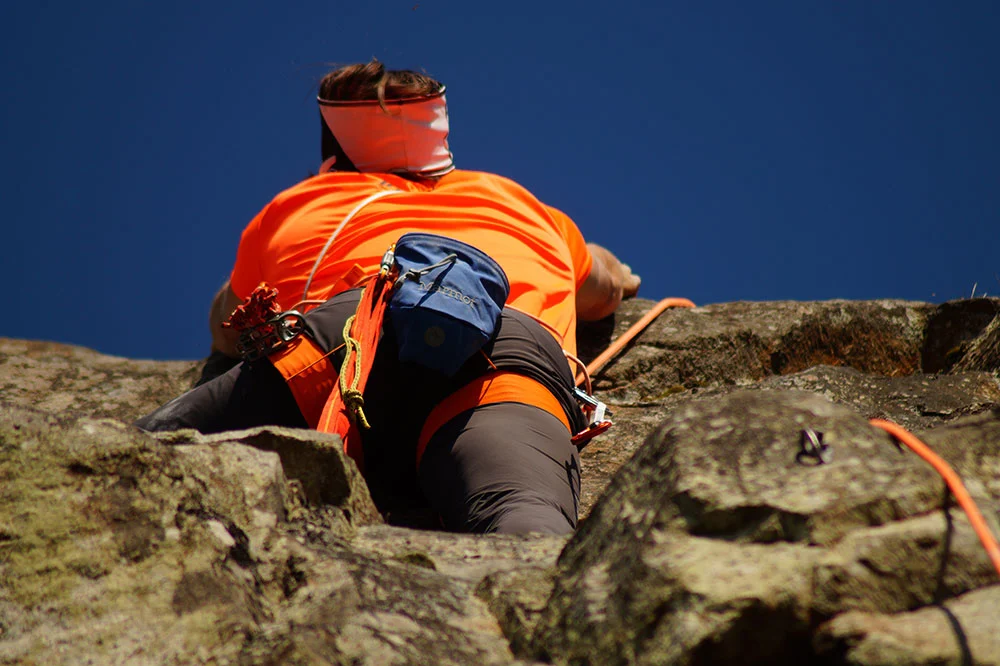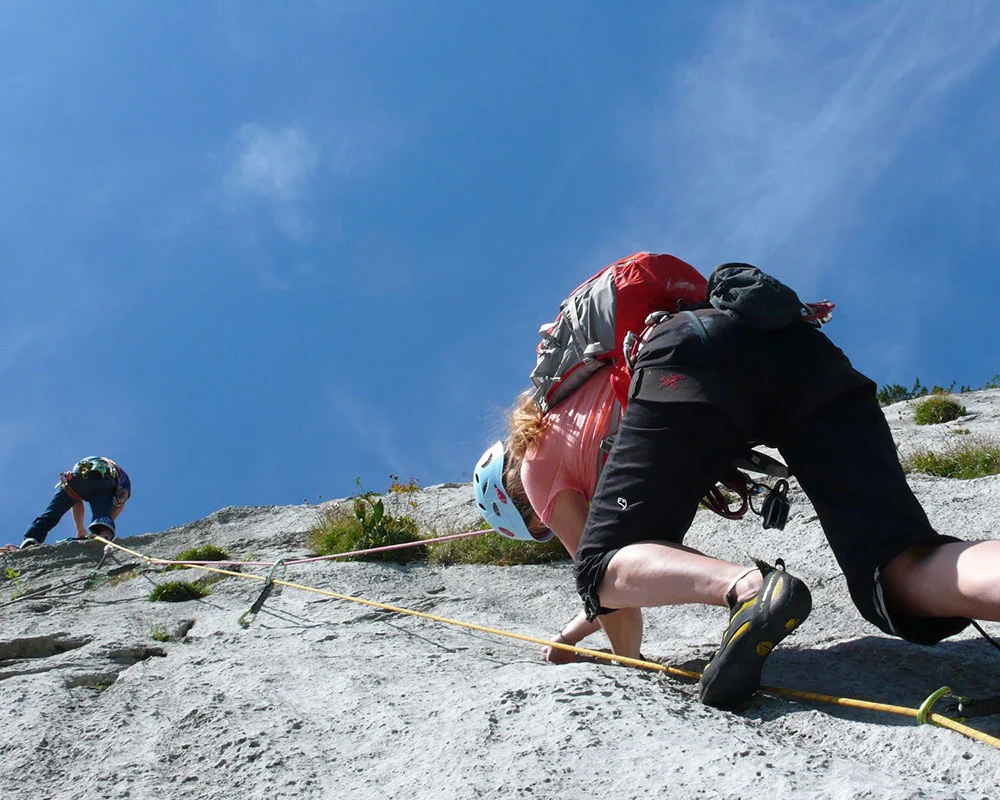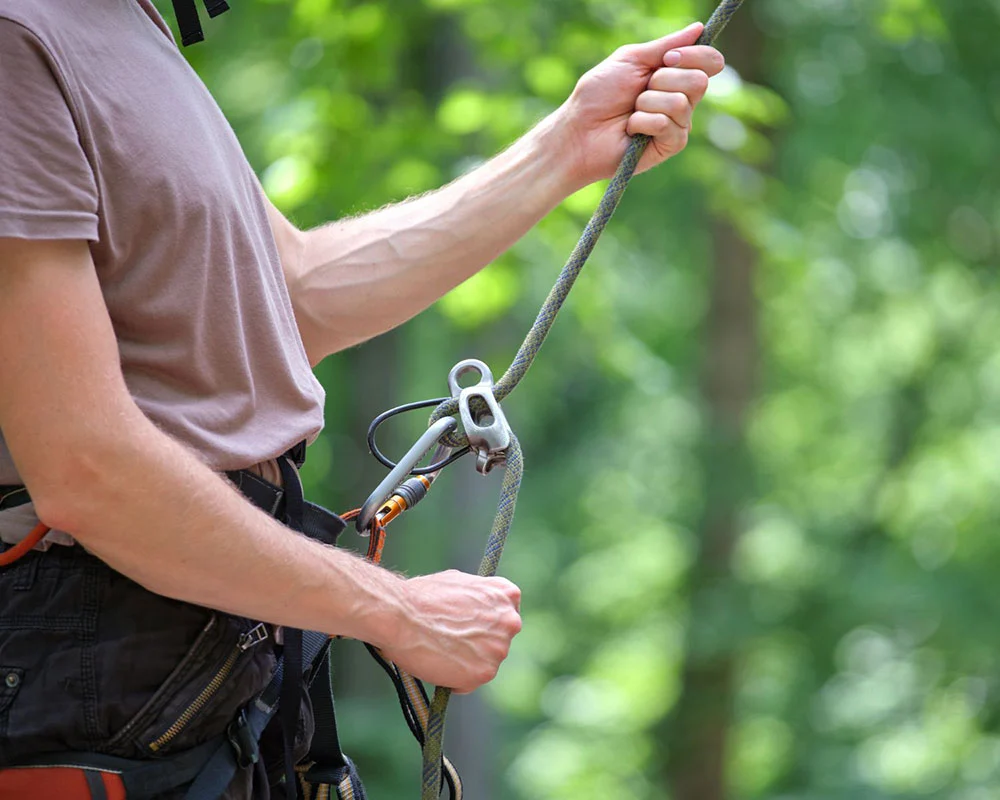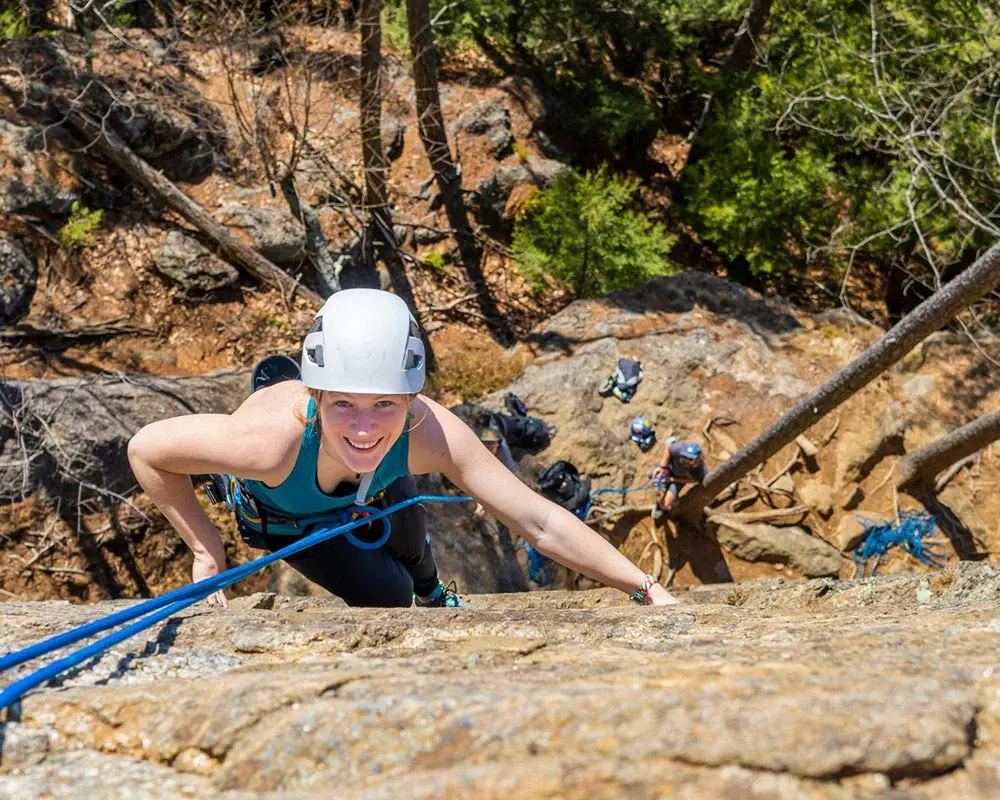Welcome to the thrilling world of rock climbing, where each step up in sport climbing vs. lead climbing brings new challenges and excitement! In this comprehensive guide, we’ll explore the similarities between two popular climbing styles – sport climbing and lead climbing.
Whether you’re a beginner or an experienced climber seeking to expand your skills, this blog will equip you with essential insights to help you decide which style suits you best.
Key Takeaways
- Sport climbing is beginner-friendly, emphasizing safety and athleticism with pre-placed bolts and minimal gear requirements.
- Lead climbing is advanced, necessitating gear placement and higher skill levels
- Safety differences exist between styles; sport climbing is safer due to pre-placed bolts, while lead climbing requires proper gear placement.
- Both styles need correct technique, but lead climbing demands more precision and strategy due to its challenges.
- Factors influencing style choice include personal preferences, skill level, experience, and access to climbing areas.
- Beginners are advised to start with sport climbing, progressing to lead climbing with experience and skill development, always prioritizing safety.
Understanding Sport Climbing Vs. Lead Climbing
Let’s start with a short explanation of each of these climbing styles.
What is Sport Climbing

Sport climbing involves climbers ascending a predetermined route that has already been bolted with fixed anchors, allowing for quick clipping of safety equipment.
Sport climbing is a popular style of modern rock climbing that emphasizes safety, athleticism, and accessibility to beginners. Sport climbers ascend pre-established routes with the use of fixed anchors (usually in the form of bolts drilled into the rock face).
As they ascend, climbers attach their rope to these bolts using quickdraws – lightweight devices made from carabiners and webbing. The popularity of sport climbing has sky-rocketed over the past few decades because it allows people to enjoy outdoor rock climbing without needing extensive knowledge about placing gear or evaluating natural protection placements like cracks or crevices.
Sport climbing also provides a more controlled environment for practicing specific techniques such as dynamic movements or endurance-based climbs, making it an ideal option for those seeking physical challenges while enjoying beautiful outdoor settings.
Click here to learn more about sport climbing including tips, techniques, and gear.
What Is Lead Climbing?
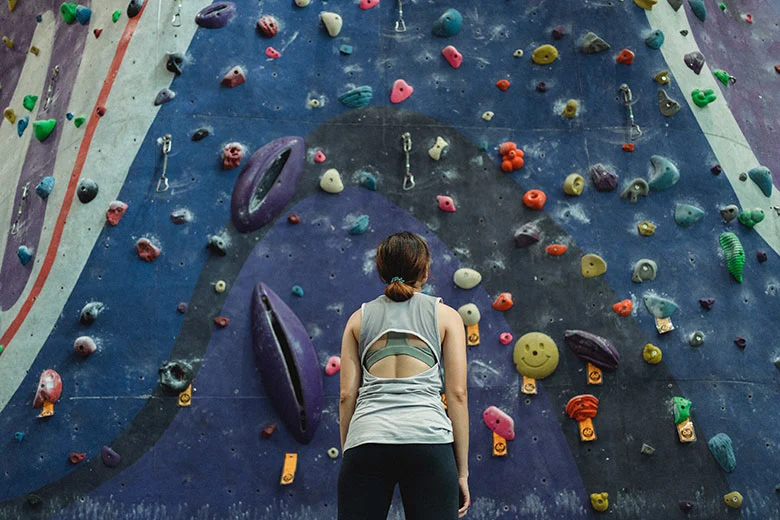
Lead climbing is a more advanced and technical form of rock climbing that requires climbers to place their protective gear, such as cams or nuts, into cracks and other natural features on the rock face as they ascend.
This style of climbing adds an extra level of challenge and skill compared to sport climbing because climbers are responsible for assessing the route and determining where to place the protection equipment.
As lead climbers ascend, they must carefully clip their rope through quickdraws attached to each piece of protection they’ve placed along the way. Lead climbing often involves longer routes with more complex terrain. The self-reliance required in lead routes often attracts climbers who relish problem-solving under pressure while being resourceful with limited equipment options.
Differences In Gear And Equipment
To explore further details about climbing gear and equipment check out this video:
If you’re trying to decide which of these types of climbing will be best for you, a good place to start is considering the differences in the gear and equipment used in sport climbing and lead climbing is crucial for beginner rock climbers.
This table gives you an overview of the gear and equipment needed for both sport climbing and lead climbing.
| Equipment | Sport Climbing | Trad Climbing |
| Climbing rope | Required | Required |
| Harness | Required | Required |
| Helmet | Recommended | Recommended |
| Quickdraws | Required | Optional (depending on the route) |
| Anchors | Pre-placed bolts | Placed by the climber |
| Protection gear | Not required | Required |
| Climbing shoes | Required | Required |
| Belay device | Required | Required |
| Cams | Not required | Required |
| Nuts | Not required | Required |
| Slings | Not required | Required |
Of course, both styles of climbing require basic equipment such as a climbing rope, harness, helmet, climbing shoes, and a belay device. However, sport climbing requires less additional gear because sports climbing routes already have pre-placed bolts. In contrast, trad climbing requires the climber to place their own protection gear, such as cams, nuts, and slings, as they climb.
Safety Considerations

Safety is a top priority in any type of climbing. When it comes to sport climbing versus lead climbing, there are some safety considerations specific to each style.
In sport climbing, climbers rely on pre-placed bolts for protection, which means that the risk of hitting the ground in case of a fall is lower than in lead climbing, where the climber places their own protection.
Lead climbing and sport climbing use most of the same safety gear, such as ropes and quickdraws. However, in lead climbing, the climber must understand how to correctly place the protection gear, which isn’t required in sports.
Both lead climbing and sport climbing require proper communication between the climber and belayer but this is even more important in lead climbing because the leader is both placing gear and belaying the other climber(s).
Techniques And Styles

Developing proper technique is crucial for climbers of all levels, whether they prefer sport climbing or lead climbing.
For sport climbing, climbers must learn the techniques necessary for moving efficiently and placing their feet and hands in holds while ascending and belaying techniques for both the ascent and descent. Other essential climbing techniques include learning body positioning, which is critical for conserving energy and preventing injuries.
In addition to the skills required for sport climbing, Lead climbers must learn how to place their own gear and belaying techniques required to assist the climbers below. Lead climbing requires even more precise hand and foot placements as well as strategic use of gear. Lead climbing demands greater endurance compared to sport climbing due to the longer ascents or tougher sequences involved.
Sport Climbing Or Lead Climbing? Which Is Right For You
When deciding between sport climbing and lead climbing, it’s important to consider personal preferences, skill level, experience, and access to climbing areas.
Personal Preferences
Choosing between sport climbing and lead climbing often comes down to personal preferences. Some climbers prefer the adrenaline rush of lead climbing, while others enjoy the convenience and safety of sport climbing.
Ultimately, there is no right answer when it comes to choosing between these two styles. It all depends on what type of climb suits your personality, abilities, and goals best.
Regardless of which style you choose, remember that both require careful attention to technique and safety measures, such as the proper use of helmets, harnesses, ropes, and anchors.
Skill Level And Experience
Your experience level plays a significant role in your decision-making process. If you’re new to climbing, it is recommended that you begin with sport climbing as it requires less gear and
As you become more experienced, you may find yourself drawn towards lead climbing to challenge yourself physically and mentally. However, it’s important not to push yourself beyond your abilities.
Always climb within your limits, gradually increasing the difficulty of routes as you improve.
Access To Climbing Areas
Climbing styles can also vary depending on access to climbing areas. Sport climbing is more commonly found in indoor gyms or outdoor crags with pre-placed bolts for protection, while lead climbing is preferred in areas without permanent anchors.
Lead climbers enjoy the freedom of exploring remote areas where they need to carry and place their own gear for protection. Additionally, What is the difference between sport climbing and lead climbing?
Some climbing areas are suitable for both sport climbing and lead climbing. Other areas only allow certain types of climbing due to environmental or safety concerns, such as prohibiting bolt placements in certain rock formations.
Making A Decision Between Sport Climbing And Lead Climbing
Ultimately, whether you choose to pursue sport climbing or lead climbing is a personal decision that depends on what you enjoy most about the sport. If you prefer a faster pace and pushing your physical limits, sport climbing may be the way to go.
But why limit yourself to just one style? Many climbers find that they excel in both styles and enjoy switching it up.
Always put safety first regardless of which style or styles you choose to pursue. Respect the environment around you and always climb with proper safety equipment.
FAQs
Which style of climbing is safer – sport or lead?
Both styles have inherent risks, but sport climbing is generally considered safer due to the presence of fixed anchors and less likelihood of falls from higher heights. However, proper training and safety precautions should always be taken in both styles of climbing.
Is one style better for beginners than the other?
Sport climbing may be easier for beginners due to its shorter routes with fewer obstacles, while lead climbing requires more experience and skill in placing gear correctly while maintaining safe practices during ascent. Ultimately, it depends on individual abilities and preferences when choosing which style to pursue as a beginner climber.
Can I switch between sport and lead climbing easily?
Once you learn the essential techniques for each sport, it is possible to switch between them. However, It will take some adjustment to switch between the two styles, as they require different techniques and strategies for ascension. It’s recommended that climbers receive proper training in both types before attempting them at a high level.

